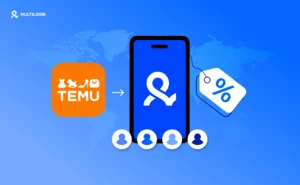Table of Contents
Anti-scraping signals
Anti-scraping signals are warning signs that show a website your activity might not come from a real person. Sites watch for these signals to block bots, scripts, or tools that try to pull large amounts of data. For businesses running research, automation, or multiple accounts, these signals are the main reason access gets restricted.
What are anti-scraping signals?
Each time you open a page, your browser leaves small traces in the background. If those traces don’t look like normal human behavior, the site flags them as suspicious. Common anti-scraping signals include:
unusual request speed, such as opening dozens of pages in seconds
identical patterns in how pages are loaded
missing or inconsistent browser headers
IP addresses linked to known automation or proxies
lack of natural activity like scrolling, mouse movement, or pauses
When enough of these traces appear together, websites build a risk profile. That can lead to CAPTCHAs, slower response times, or full account blocks.
Why anti-scraping signals matter?
Websites use anti-scraping signals to protect their data, secure users, and stop unfair scraping activity. For everyday users, this means fewer fake accounts and less spam. For you, if you work with large-scale data or manage multiple accounts, these signals are the barriers that often cause:
lower account trust – activity looks automated instead of authentic
broken workflows – automation scripts stop running mid-task
access bans – repeated triggers can lead to IP blocks or permanent suspensions
How anti-scraping signals work?
Websites don’t rely on a single test. They combine hundreds of small checks to decide if activity is genuine. Here are some of the most common:
Request patterns – human browsing is irregular, while bots often make perfectly timed requests.
Headers and fingerprints – real browsers show a consistent set of technical details; scrapers often miss or fake them.
Interaction data – no clicks, scrolling, or typing makes behavior stand out as robotic.
IP reputation – if many users abuse the same proxy range, it gets flagged quickly.
These checks run quietly in the background, which is why many users don’t realize they’ve been flagged until they hit a CAPTCHA or lose access.
Common examples of anti-scraping signals
Websites may see red flags when they detect:
logins from dozens of accounts using the same IP
thousands of page requests made in a short time without pauses
identical behavior repeated over and over
browser profiles with missing or fake fingerprint details
Each of these on its own may not block you. But together, they create a clear signal that automation is at work.
How to prevent anti-scraping signals?
You can’t stop sites from looking for these signals, but you can avoid standing out as a bot. The key is to make your activity look natural and consistent.
Control your timing – spread out requests, add pauses, and avoid mechanical browsing patterns.
Use reliable IP addresses – rotate carefully, but keep sessions stable enough to look natural.
Keep full browser fingerprints – incomplete or fake details stand out; a proper setup should look like a real device.
Isolate accounts – don’t let one flagged account affect others by running them in the same environment.
Use Multilogin for full protection – with Multilogin, you can prevent anti-scraping signals from exposing your setup. Each browser profile has its own unique fingerprint, cookies, and proxy, making every session appear like a genuine, long-term user. This keeps accounts safe and prevents bans, even at scale.
Key Takeaways
Anti-scraping signals are the digital footprints that reveal bots and automated activity. They are useful for websites but difficult for businesses that rely on scraping or account automation. By managing browsing patterns, fingerprints, and IPs — and using tools built for full prevention — you can reduce detection, keep accounts stable, and continue working without interruption.
People Also Ask
They are technical patterns websites use to detect and block automation.
They track request speed, browser details, IP reputation, and interaction patterns.
Yes. Even normal users can trigger them if their behavior looks unusual.
By browsing with natural patterns, keeping stable sessions, and managing fingerprints with tools like Multilogin.
Related Topics

Stop buying aged TikTok accounts: build safer long-term profiles with Multilogin
TikTok has turned into one of the most important platforms for

How to use Pinterest for marketing: mobile-first strategy powered by Android emulation
Why marketers now rely on Android-emulation to unlock mobile-only traffic, visibility,

Temu coupon codes for existing users: how to unlock more mobile discounts with Multilogin
If you have been shopping on Temu for a while, you